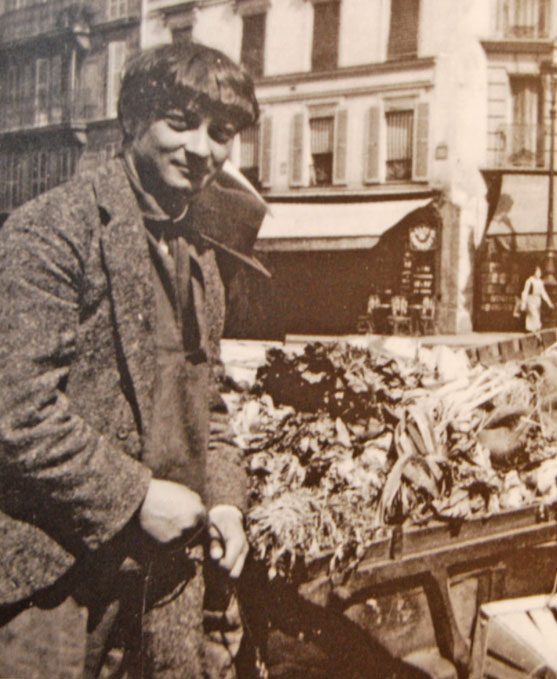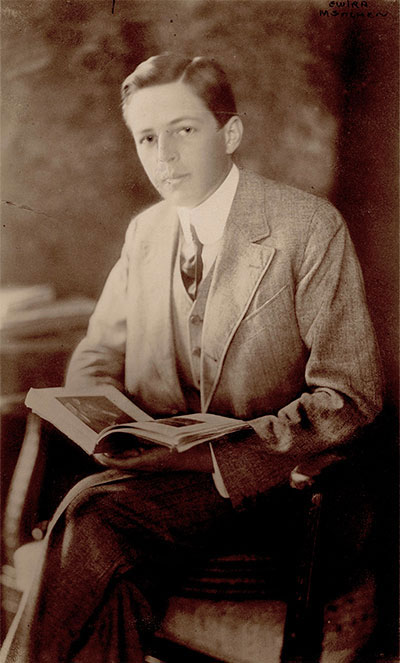

Scofield Thayer's Picasso
By James Dempsey
Worcester, MA, USA

James Dempsey
More than any other artist of his period, Pablo Picasso has insinuated himself into the public imagination. Even those who otherwise have no interest in art are aware of Picasso, if only of his famous cubes. He seems to have been a master of public relations. His public persona, whether natural or carefully crafted or a little of both, was one of intensity, virility, virtuosity, and endless creativity, and his name could be found in both the highbrow magazine of art and culture and the popular press.
Our fascination with the artist continues today, more than half a century after his death. Case in point: the widespread interest in the recent reappearance of a Picasso that had been missing for some 14 years. The painting, "La Coiffeuse" (The Hairdresser), which had been stolen from a French museum in 2001, turned up mysteriously in New Jersey via a FedEx shipment from Belgium with the message, "Merry Christmas."
But it is another Picasso painting that must hold the record for falling out of circulation for the longest time, "Erotic Scene," also known as "Le Douleur."
This oil painting, which has been dated to 1902 or 1903, shows a young, even boyish Picasso, being fellated by a woman. It is still quite shocking, not least for its suggestion of pedophilia, even in these days of easily accessed pornography. The young Picasso stares straight at the viewer; indeed, so directly brazen is his gaze that the official description of the painting by the Metropolitan Museum of Art in New York states that the young Picasso is staring into a mirror, even though there is no mirror pictured. If the Met's description is correct, the viewer must be watching the scene from behind what is essentially a one-way mirror, a point of view that makes the viewer feel even more uncomfortably voyeuristic.

Pablo Picasso - Paris, 1916
The painting was a gift to Picasso's tailor, perhaps to settle a clothing bill. Picasso was not proud of it, and when asked about the painting in the 1960s, he denied painting it. Research shows that he in fact did.
The painting was bought in 1912 by a dealer and sold in 1923 to Scofield Thayer, American publisher of the magazine the Dial and collector of art. We know this thanks to a 1924 letter from Albert C. Barnes, a rival collector: "Last summer, I saw Thayer buy a painting by Picasso showing Picasso himself having his cock sucked by a woman. Aside from the fact that it is a good likeness of Picasso, the picture is only pornographic, not art." (Barnes made no secret of his profound dislike for Thayer, which he said Picasso shared, relating the artist saying of Thayer, "I would like to piss on him.")
Thayer, on the other hand, was in awe of Picasso, referring to him as "the chief ornament of our time." Thayer's magazine, famous for publishing writers such as T.S. Eliot, Ezra Pound, William Carlos Williams, Marianne Moore, and Virginia Woolf, also published a good number of works by Picasso and other artists of the period, so introducing Modernism to America. Thayer also published a folio entitled Living Art, which reproductions of what Thayer believed was the best in the art of the period. Picasso was, of course, featured.
Thayer suffered from mental illness, and in the late 1920s, following a severe breakdown; he retired from public life and spent the rest of his days under guardianship. Most of his large art collection was placed on loan at the art museum in his hometown of Worcester, Massachusetts, but the erotica, including the Picasso, were placed in a trunk in a storage warehouse less than a mile from the museum.
And there "Erotic Scene" stayed, forgotten for more than 50 years until it was discovered following Thayer's death in 1982.
The painting, along with the bulk of Thayer's collection, was bequeathed to the Metropolitan Museum of Art in New York City, where it was once again put into storage.

Scofield Thayer
It finally saw the light of day when it was included in the Picasso exhibition held at the Met in 2010. After the exhibition ended, the painting was once again removed from public view.
There are those who concur with Barnes's (and evidently Picasso's) low opinion of the piece. Gary Tinterow, then a curator at the Met, described it to the New York Times as "not very good" and "slapdash." The painting was rarely brought out for display he said, not because of its subject matter, but because of its poor quality.
Not everyone agrees. Writing in Artnet magazine, Jerry Saltz said that the painting "pulsates with primitive psychic power and visual originality, and shows an artist arriving simultaneously at carnal knowledge of himself and his art."
Thayer recognized in Picasso a genius that today is generally unquestioned. Indeed, Picasso's ideas about art have been dominant for so long that they have become almost orthodox. Yet in "Erotic Scene" we can still see, long after his death, the painter's uncanny ability to thrust himself and his art into the cultural discourse.
Link:
James Dempsey's Profile at Stay Thirsty Publishing






